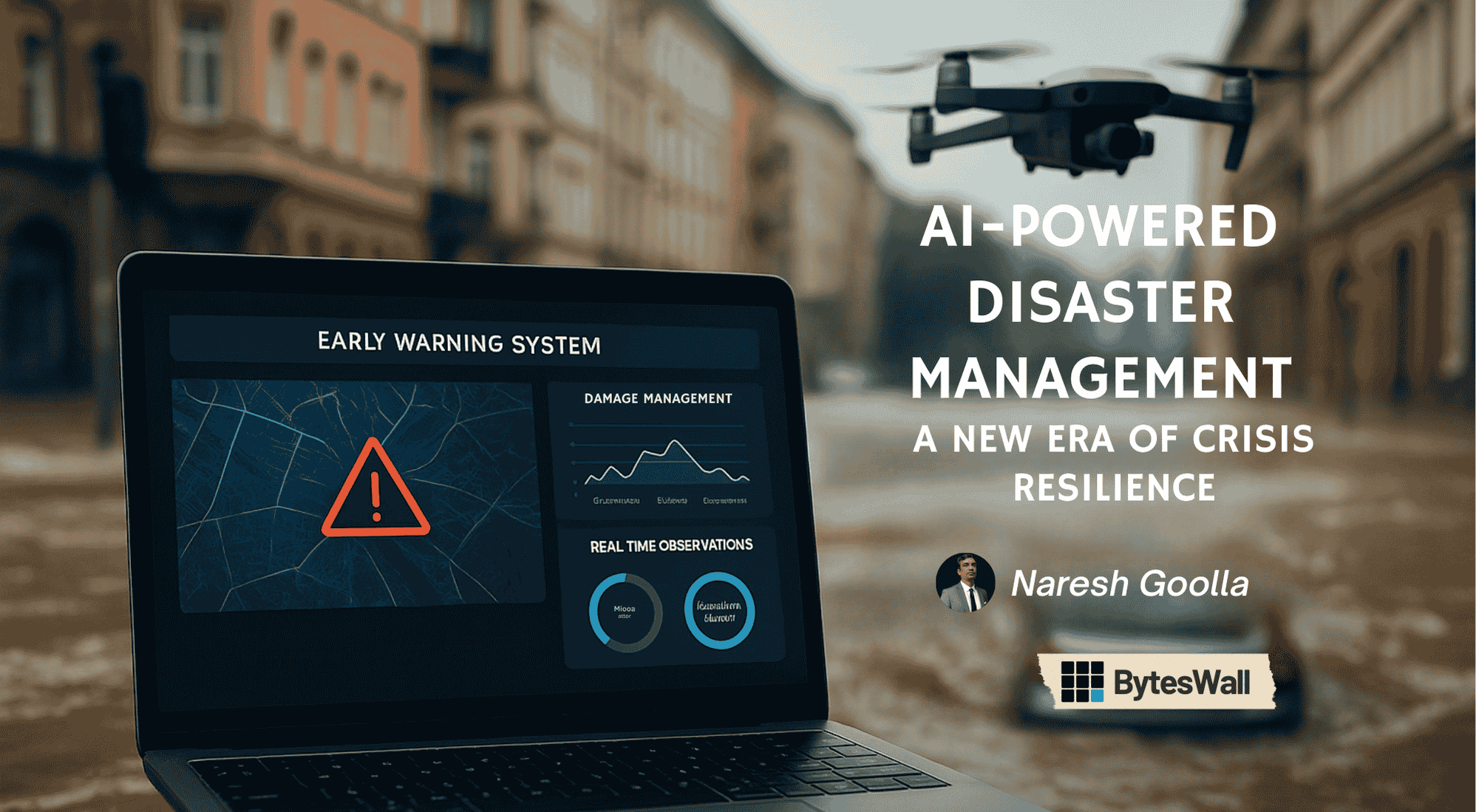- AI enables real-time disaster prediction, helping save lives through early alerts and response planning.
- Satellite imagery, drones, and social media data power situational awareness during active crises.
- AI improves evacuation strategies and optimizes aid distribution in real time.
- Post-crisis, AI speeds up recovery with faster damage assessment and smart rebuilding.
- Ethical AI practices are essential to ensure privacy, fairness, and inclusivity in disaster response.
As the climate crisis escalates, the frequency and severity of natural disasters continue to rise. Earthquakes, floods, wildfires, and pandemics are no longer isolated incidents but part of a growing global pattern. These calamities pose serious threats to lives, infrastructure, and economies. But while nature’s unpredictability is inevitable, our response doesn’t have to be. Artificial Intelligence (AI) is revolutionizing how we forecast, manage, and recover from these catastrophic events, turning data into decisive action.
Why AI? Because Timing and Insight Matter
Disaster management has traditionally been reactive, often hampered by delayed responses and limited foresight. Today, AI offers a proactive lens — empowering us to anticipate threats, orchestrate efficient responses, and rebuild smarter.
AI’s edge lies in its ability to process vast and varied datasets — from satellite images and sensor outputs to social media activity and historical weather records. By detecting patterns and anomalies, AI algorithms can predict disasters like floods, landslides, or disease outbreaks before they unfold. This predictive power allows emergency agencies to issue timely warnings, initiate evacuations, and pre-position critical resources, potentially saving thousands of lives.
Prediction and Early Warning Systems: When Every Second Counts
One of AI’s most impactful applications is in early warning systems. Consider flood-prone regions: AI models integrate live weather data, river levels, and topographical information to simulate water flow, identify likely inundation zones, and project infrastructure damage. This enables precise, real-time alerts tailored to communities most at risk.
Beyond weather, AI is also helping predict outbreaks of vector-borne diseases such as dengue or malaria. By analyzing climate shifts, historical data, and environmental conditions, AI models provide public health officials with the insights needed to deploy medical resources ahead of the curve.
In essence, AI is transforming what was once a guessing game into a science of informed preparedness.
Real-Time Response and Situational Awareness
Once disaster strikes, chaos can follow. That’s where AI steps in again — this time to make sense of the storm.
Using satellite imagery, drone footage, and citizen reports on social media, AI platforms generate dynamic maps showing damage levels, blocked roads, and population movement. This situational awareness enables first responders to prioritize rescue operations, assess resource needs, and coordinate with precision.
Take the example of the earthquake aftermath. AI systems can automatically scan satellite photos to detect collapsed structures or impassable roads. Simultaneously, social media sentiment analysis helps locate trapped individuals or distressed communities. This fusion of data supports faster, more targeted intervention.
Smarter Resource Allocation and Evacuation Planning
Logistics during disasters can make or break recovery efforts. AI-driven analytics help optimize resource distribution — whether it’s food, medical supplies, or emergency shelters. By monitoring transport networks and forecasting demand hotspots, AI ensures that aid reaches those who need it most without unnecessary delays.
Moreover, AI algorithms can simulate evacuation scenarios, model traffic congestion, and identify the safest, fastest routes to shelters. This helps city planners and disaster response teams guide residents to safety with confidence — especially in densely populated or high-risk areas.
Beyond the Crisis: Accelerating Recovery
Even after the worst is over, the road to recovery is long and complex. AI continues to play a vital role in post-disaster rebuilding. From automating damage assessments to recommending optimized infrastructure design, AI shortens recovery timelines and enhances resilience.
Insurance companies, for instance, can leverage AI to estimate property damage within hours, fast-tracking claims processing and rebuilding. Governments can analyze which communities need the most support and plan sustainable redevelopment accordingly.
Ethical AI in Emergencies: A Human-Centered Approach
While AI offers immense potential, it also raises important ethical questions, especially when deployed during crises. Privacy concerns, algorithmic bias, and digital inequality must be addressed to ensure AI serves all communities equitably.
For example, relying on mobile location data to assist during evacuations could inadvertently violate user privacy if consent protocols aren’t followed. Similarly, if AI models are trained on biased data, certain marginalized groups might receive less attention or assistance during disasters.
Ethical deployment must be built into AI systems from the ground up — with transparency, accountability, and inclusivity at the core. This includes ensuring AI tools are accessible to underserved and disabled populations, even in remote areas.
The Path Forward: Human-AI Collaboration
It’s vital to remember that AI is not a replacement for human expertise, but a powerful partner. When combined with human judgment, empathy, and local knowledge, AI becomes a transformative force in disaster management.
From anticipatory planning to rapid response and strategic recovery, AI empowers communities to become more resilient. However, its integration must be thoughtful, ethical, and continually refined. As we face an increasingly uncertain future, building intelligent, adaptable, and fair disaster-response systems is no longer optional — it’s urgent.

